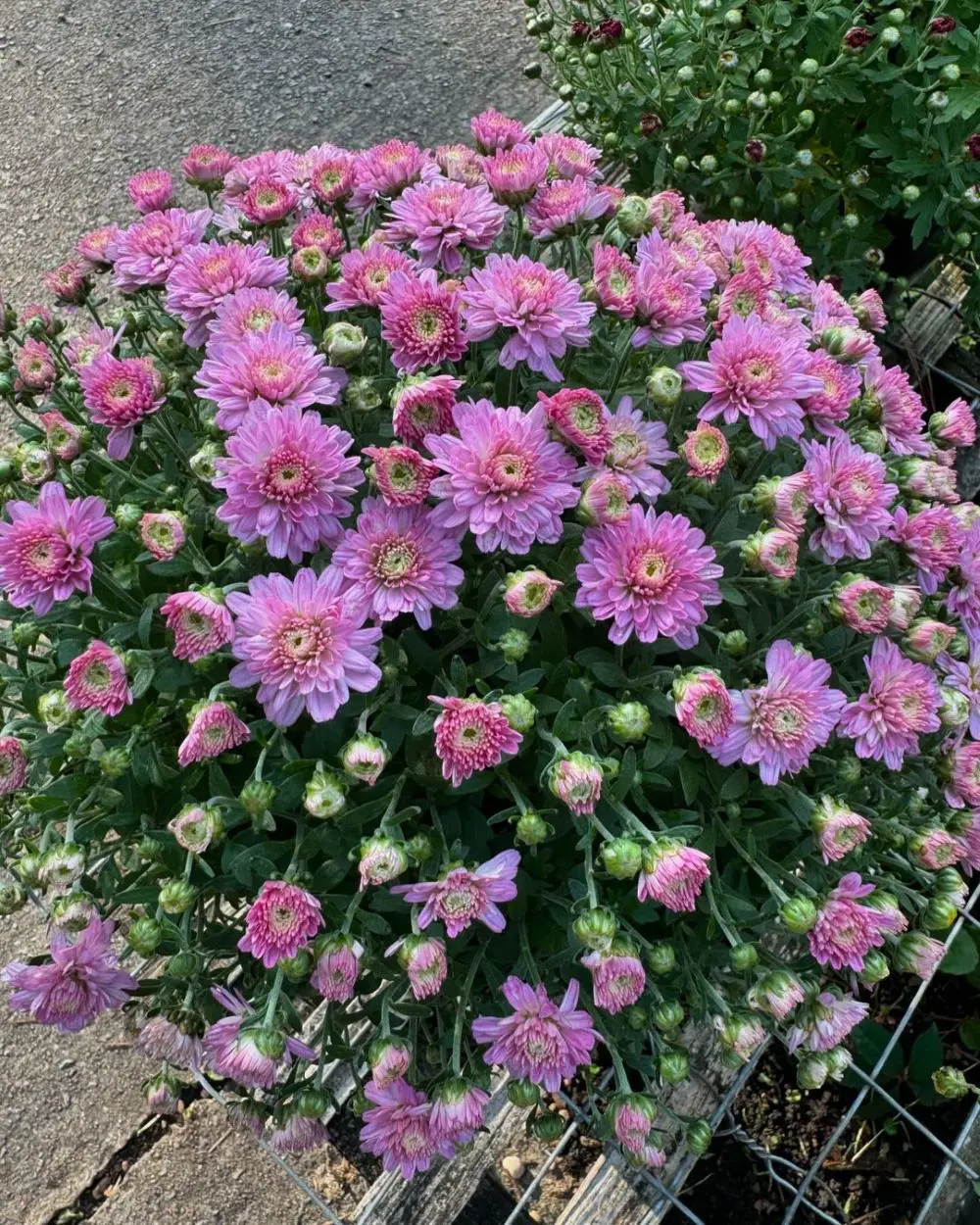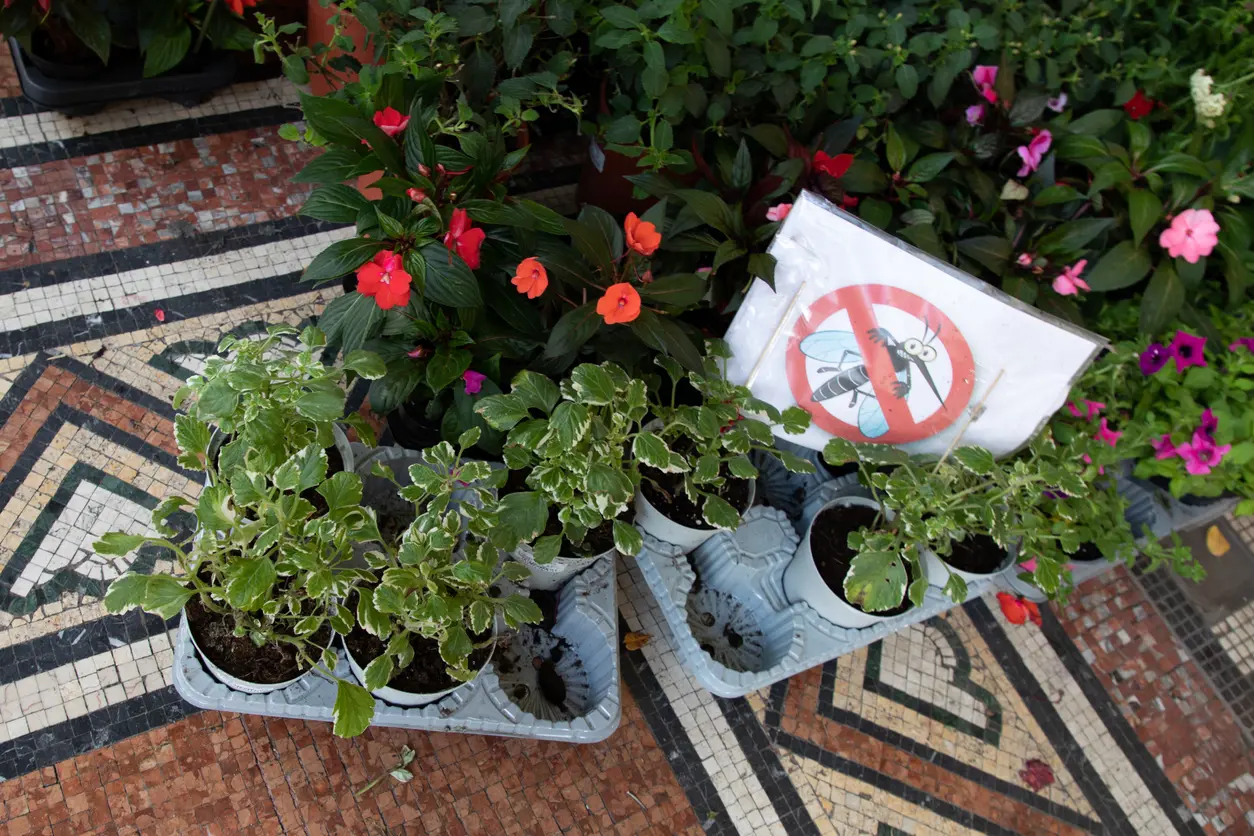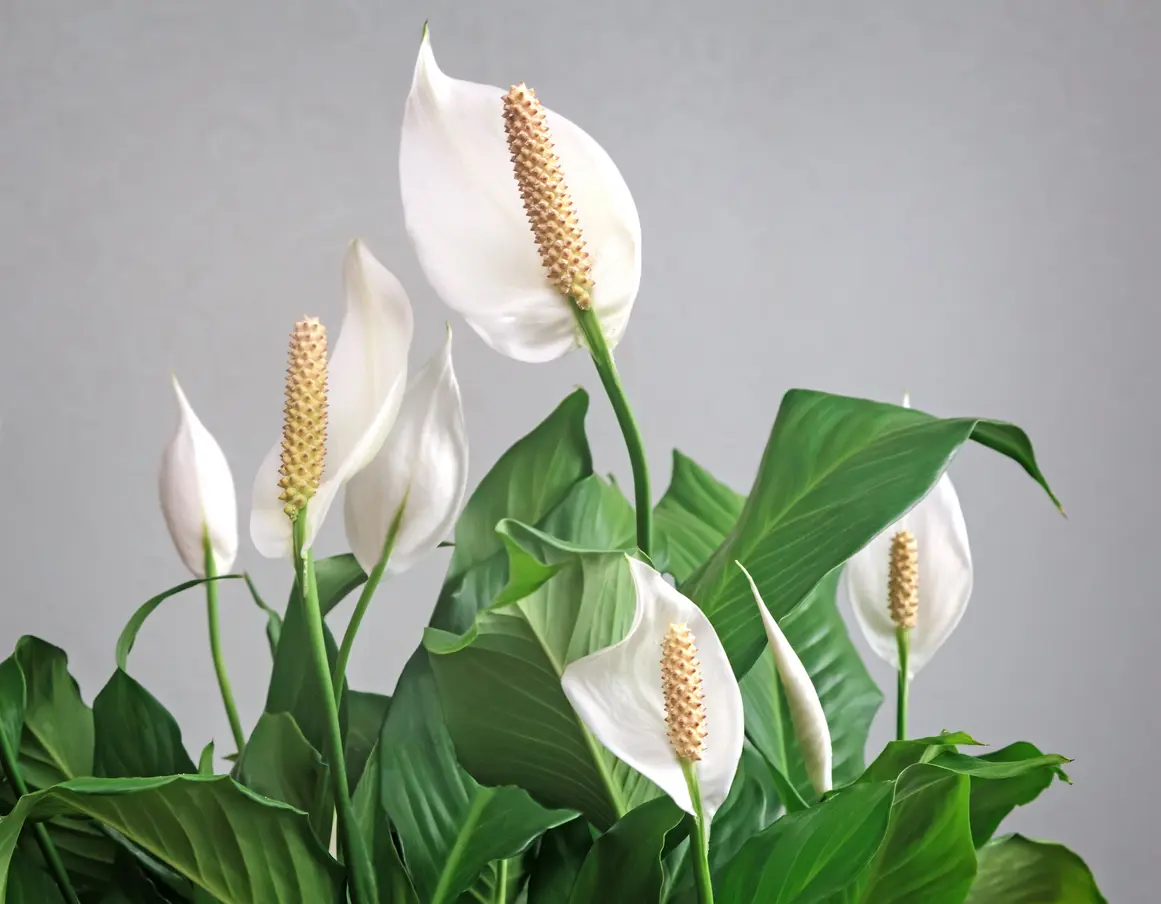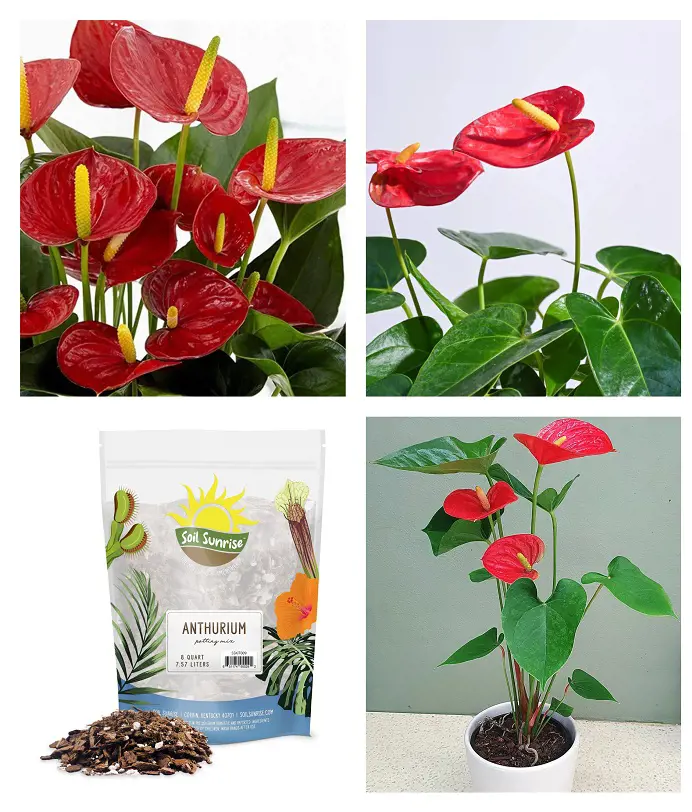
With their heart-shaped blooms and glossy, leathery leaves, anthuriums are prized houseplants for their exotic beauty and low-maintenance care.
Native to tropical rainforests, these stunning plants are present in a wide variety of colors, from red and orange to delicate pink and purple.
While they appear delicate, anthuriums are surprisingly resilient with proper care. The key to maintaining your blooming anthurium lies in understanding its basic needs for fertilizing, watering, and soil.
Anthurium Plant Care
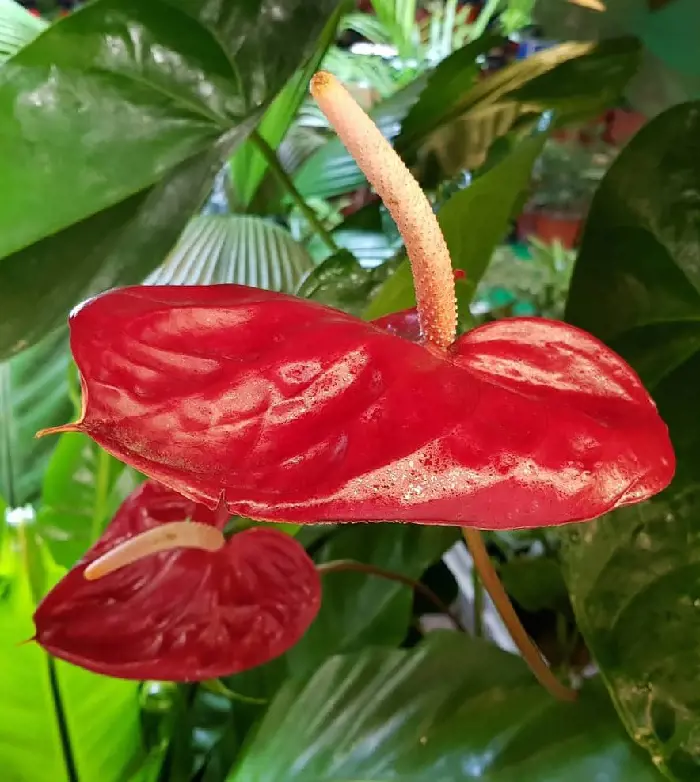
Anthuriums, with their stunning heart-shaped "flowers" and lush foliage, add a touch of the tropics to any indoor space. But don't worry, they are low-maintenance plants! Here's a quick guide to keep your anthurium thriving:
- Light: Bright, indirect light is key. Avoid harsh midday sun.
- Water: Water deeply when the top inch of soil feels dry, then let it drain well. Don't overwater!
- Humidity: Mist regularly or use a pebble tray to increase humidity, especially in dry climates.
- Temperature: Keep it warm, between 65-80°F (18-27°C). Avoid drafts and cold spots.
- Soil: Well-draining potting mix is essential. Add perlite or orchid bark for extra drainage.
Now, let us dive into these factors in detail.
Sunlight Needed For Anthurium
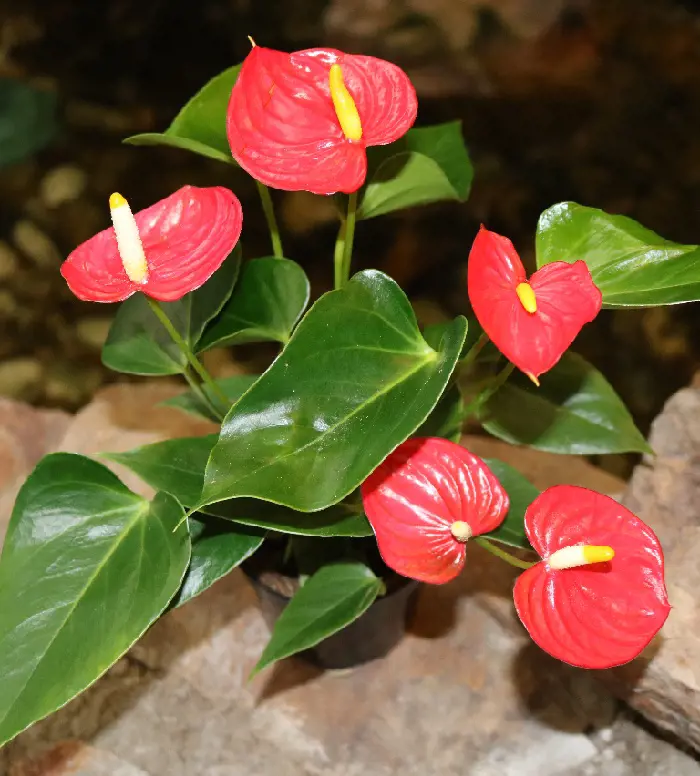
Anthurium plants thrive in bright, indirect sunlight, making them ideal for well-lit indoor spaces. These tropical beauties require filtered or dappled sunlight to flourish, with exposure to morning sunlight being especially beneficial.
Avoid placing them in direct sunlight, which can scorch their delicate leaves. If your Anthurium receives too little light, it may lead to stunted growth and fewer blooms.
Striking a balance with the right amount of sunlight ensures vibrant foliage and encourages the plant to produce its distinctive, heart-shaped flowers. Regularly assess and adjust the light conditions to keep your Anthurium flourishing.
Temperature and Humidity

Achieving the optimal environment for your Anthurium plant is quite integral to its thriving beauty. You need to maintain a temperature range between 65-80°F (18-27°C) during the day and slightly cooler at night.
Humidity is also crucial for proper care, where you need to aim for 80% or higher. Ensure well-draining soil and indirect light for these tropical beauties. Regularly mist the leaves to mimic their native habitat. Avoid drafts and sudden temperature fluctuations.
By carefully balancing temperature and humidity, you'll foster a flourishing Anthurium, adorned with vibrant, long-lasting blooms.
Choosing the Right Soil
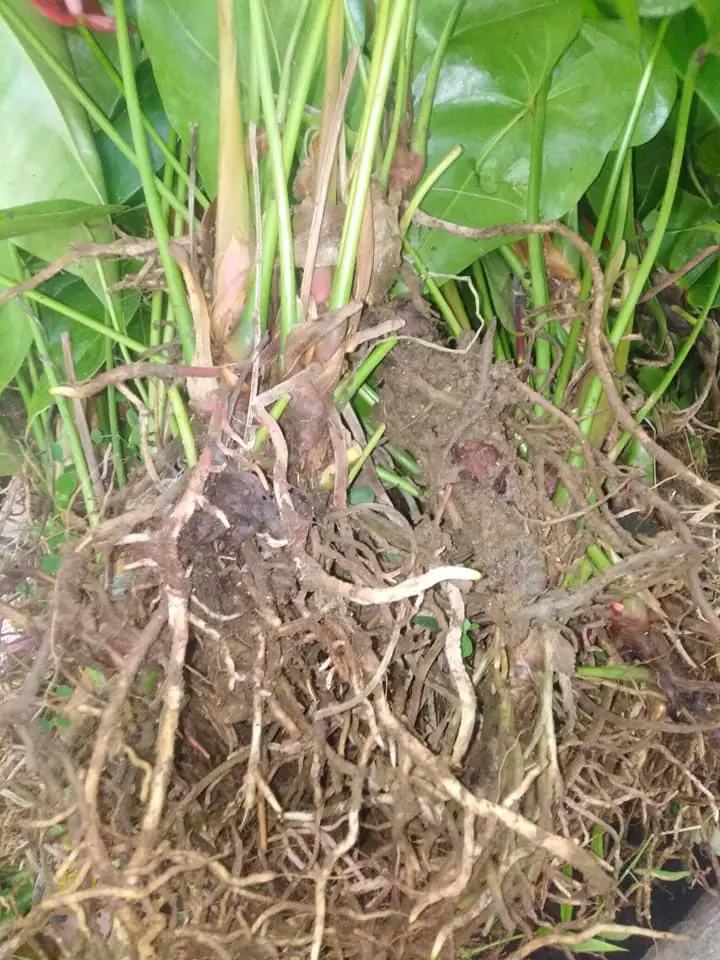
When cultivating Anthurium, selecting the ideal soil is crucial for vibrant growth. Opt for a well-draining mix that retains moisture without becoming waterlogged.
A blend of peat moss, pine bark, and perlite creates an airy, nutrient-rich environment. Anthuriums thrive in slightly acidic to neutral pH levels (5.5-6.5).
Ensure proper aeration by incorporating orchid bark or perlite. Avoid heavy soils, as Anthuriums prefer a loose structure for healthy root development. Regularly monitor moisture levels and adjust watering accordingly.
By offering the right soil conditions, you establish the foundation for stunning Anthurium blooms and lush foliage in your indoor garden oasis.
Keep Your Tropical Beauty Hydrated
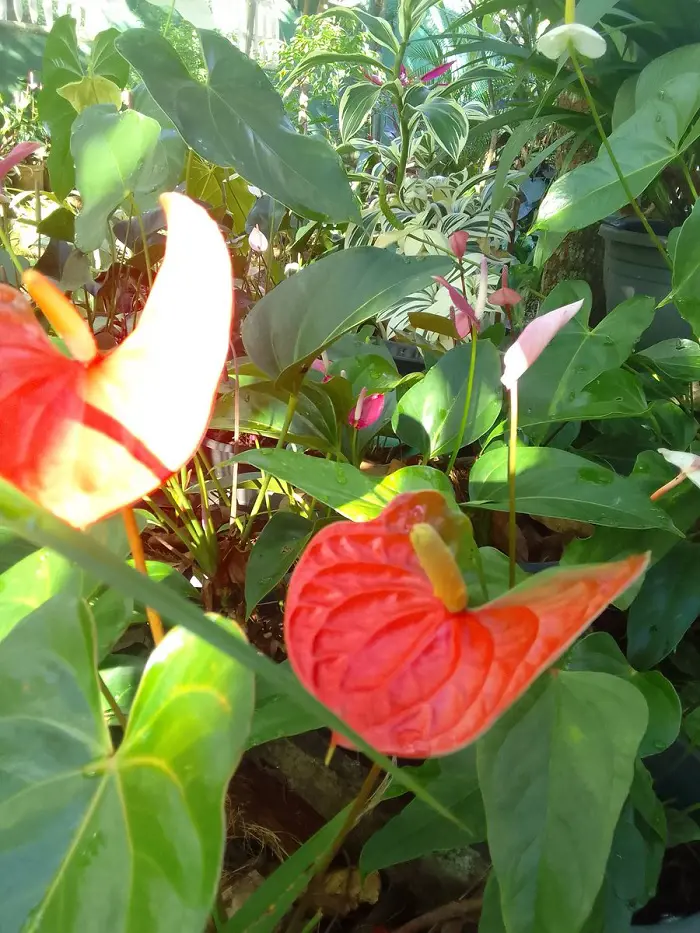
Watering your anthurium isn't rocket science, but understanding its preferences will keep it happy and healthy. Unlock the secrets to lush Anthurium blooms with these watering tips.
- Use lukewarm water to prevent shock and ensure it drains well to avoid waterlogged roots. Mist the leaves regularly to maintain the desired humidity level.
- Strike the perfect balance by watering your Anthurium plant moderately—allow the top inch of soil to dry before rehydrating.
- Adjust your watering frequency based on the season; they may need more during warmer months.
- Be cautious not to overwater, as Anthuriums are susceptible to root rot.
With these simple tips, you will watch your Anthurium grow and showcase its vibrant, heart-shaped flowers.
Planting and Container Care Tips
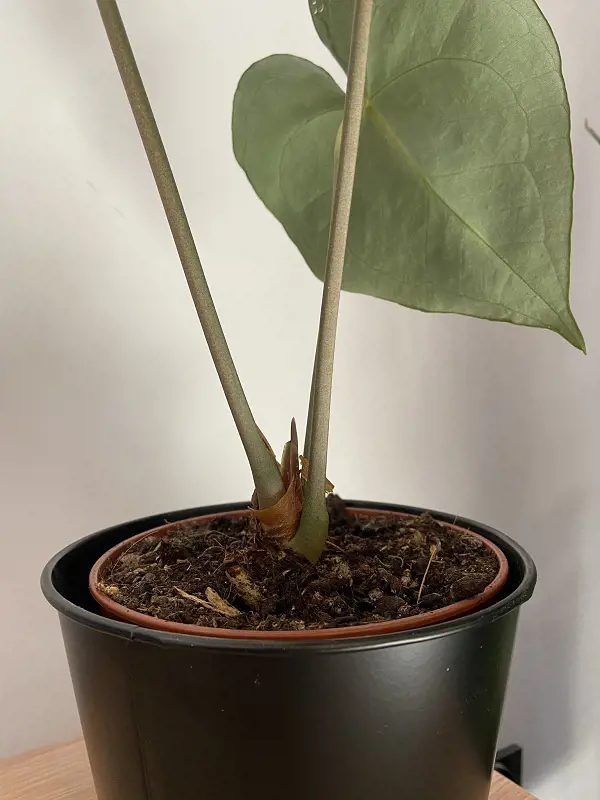
Achieving the perfect environment is crucial when planting and caring for Anthuriums. Select a well-draining container with ample drainage holes to prevent waterlogging.
Utilize a high-quality potting mix, preferably one designed for orchids or aroid plants. When planting, ensure the roots are snug but not cramped.
Place the Anthurium in bright, indirect light, avoiding direct sunlight. Maintain a consistent temperature between 65-80°F (18-27°C). Water sparingly, allowing the top inch of soil to dry before rehydration.
Fertilize every 6-8 weeks during the growing season. With these steps, you'll nurture a thriving Anthurium, gracing your space with its exotic beauty.
Choosing the Optimal Fertilizer
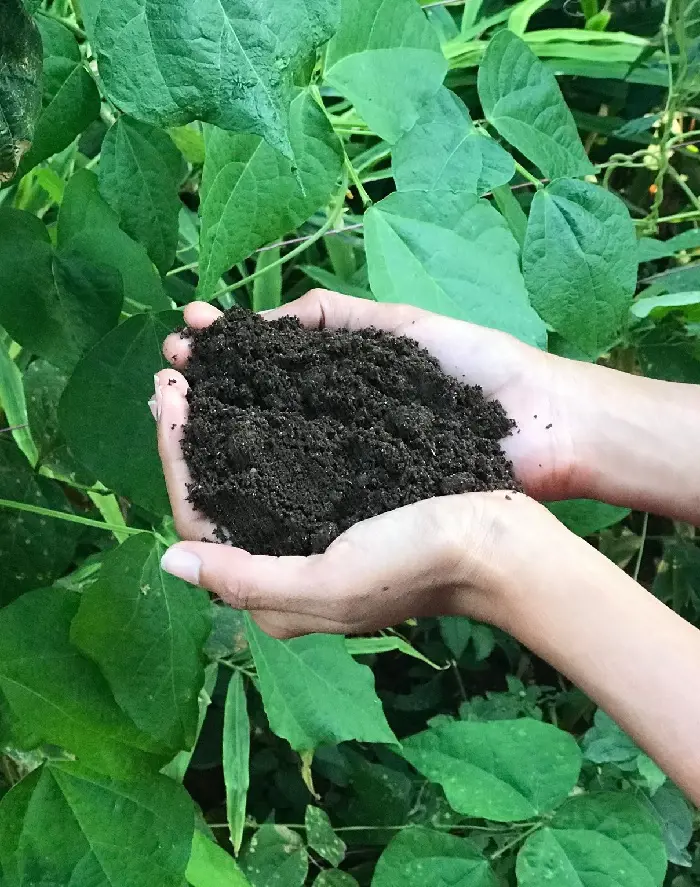
Selecting the right fertilizer for your Anthurium plants is critical for its flourishing growth. A balanced liquid fertilizer with equal parts of nitrogen, phosphorus, and potassium (a 20-20-20 or 10-30-10 NPK ratio works well) serves as an excellent choice.
Feed your Anthurium every 6-8 weeks during the growing season, spring through early autumn. Moreover, incorporate a high-quality, slow-release fertilizer to provide sustained nourishment. Keep in mind the importance of micronutrients like iron, magnesium, and calcium for vibrant foliage and blooms.
Regularly assess your plant's needs, adjusting the fertilizer regimen to promote robust, healthy Anthuriums that captivate with their beauty.
Here are some application techniques while fertilizing your Anthurium plant:
- Water thoroughly before fertilizing to prevent root burn.
- Avoid over-fertilizing, which can lead to salt buildup and damage the plant.
- Dilute the fertilizer according to package instructions and apply directly to the soil.
- Foliar feeding (misting diluted fertilizer on leaves) can be a quick nutrient boost, but shouldn't replace soil application.
Feeding for Flourishing Growth
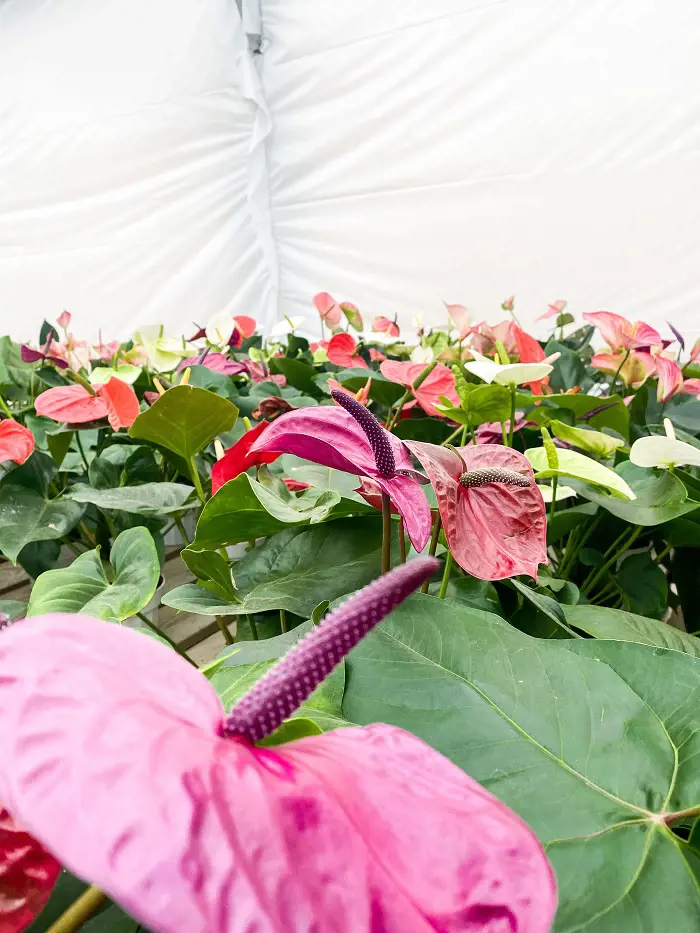
Like all living things, Anthurium needs proper nourishment to thrive. Understanding their feeding schedule and fertilizer application is key to unlocking their full growth potential.
Anthuriums have distinct growing seasons (spring and summer) and dormancy periods (fall and winter). This cycle influences their feeding needs:
- Growing seasons: During this active phase, fertilize every 2-4 weeks with a balanced liquid fertilizer diluted to half strength. Opt for a formula rich in phosphorus, which promotes blooms.
- Dormancy periods: Reduce feeding to once every 6-8 weeks with a diluted fertilizer. Avoid overfeeding, as it can harm your plant during dormancy.
To Repot or Not: Anthurium Care

Should you consider repotting your Anthurium? You should assess the signs before taking action. If the plant has outgrown its current container or displays roots emerging from drainage holes, it's time for a larger home. Repot in spring or early summer when the plant is entering its active growth phase.
Check for yellowing leaves, stunted growth, or declining health as indicators of stress. Ensure the plant's new pot provides ample space and uses a well-draining mix.
However, if your Anthurium is currently thriving, stable in its container, and not exhibiting any issues, leaving it undisturbed may be the wisest choice for uninterrupted growth.
Pruning Your Anthurium
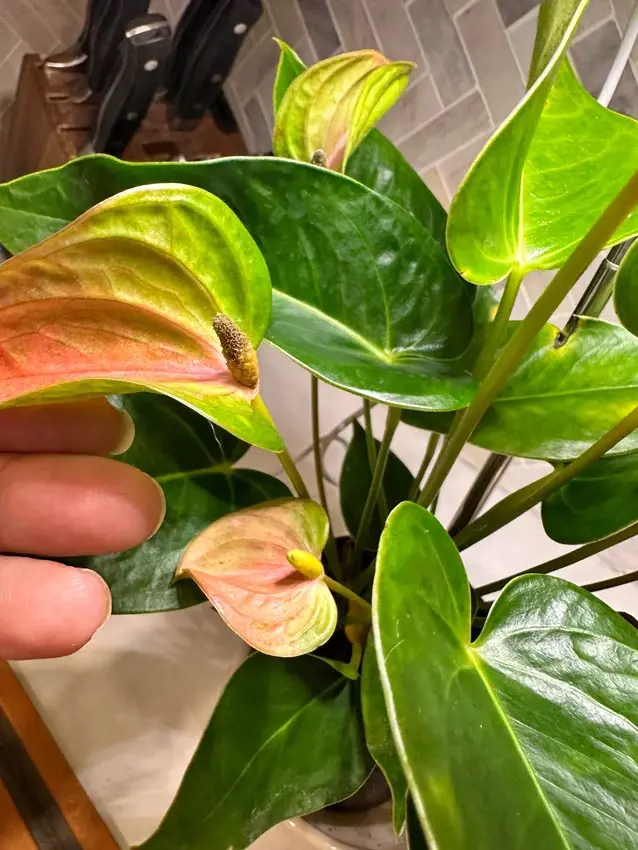
Pruning is a crucial practice for maintaining a thriving Anthurium plant. You can focus on removing yellow or damaged leaves to encourage new growth and redirect energy to healthier parts of the plant.
Trim back long stems to promote a bushier appearance and enhance the overall aesthetic. Utilize clean, sharp scissors or pruning shears to make precise cuts, minimizing stress on the plant.
Regularly inspect for any signs of diseases or pests, and promptly prune affected areas. By incorporating proper pruning techniques, you not only enhance the visual appeal of your Anthurium plant but also support its overall health and longevity.
Common Problems While Caring For Anthurium

Your anthurium, once boasting glossy leaves and fiery blooms, now seems less than thrilled. Don't panic! Many anthurium issues stem from easily fixable problems.
- Drooping and limp leaves: This could imply both under and overwatering. Check the soil! Soggy soil means overwatering (potentially leading to root rot), while bone-dry soil signals thirst.
- Browning leaves: Crispy brown edges often point to low humidity. Consider a pebble tray humidifier or misting regularly. Direct sunlight can also scorch leaves.
- No blooms: Insufficient light is a common culprit. Move your anthurium to a brighter spot (not direct sun!). Ensure consistent watering and avoid overfertilizing, which can hinder blooms.
- Pests and diseases: While less common indoors, watch for mealybugs and spider mites.
Pest and Disease Prevention Tips
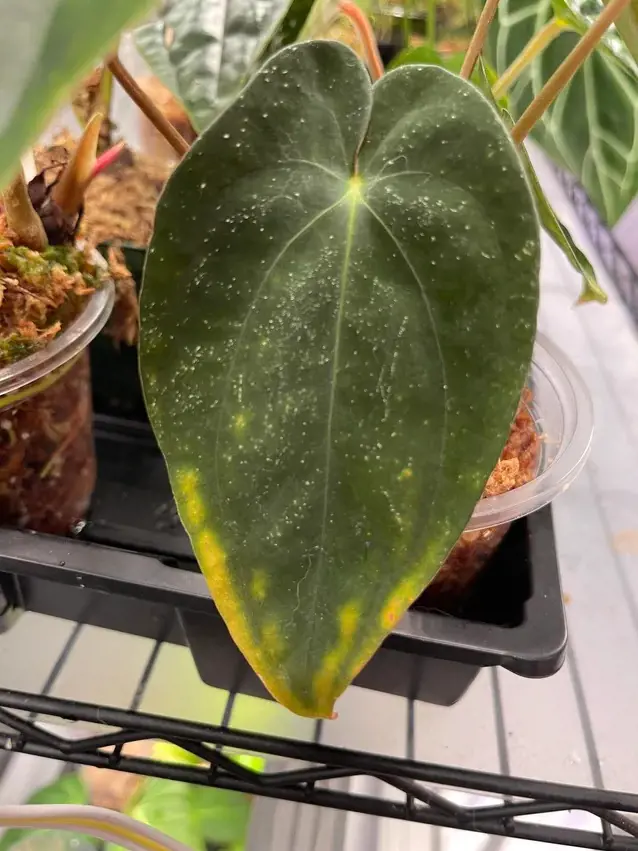
Guarding your Anthurium against pests and diseases is integral to a flourishing plant.
- Begin by inspecting regularly for signs of spider mites, aphids, or scale insects.
- Maintain proper ventilation to discourage fungal growth. Quarantine new plants before introducing them to prevent potential infestations.
- Water at the base to discourage fungal diseases, and avoid wetting the leaves. Incorporate natural remedies like neem oil for pest control, keeping a watchful eye on the plant's overall health.
- Prune infected or yellowing leaves promptly to curb the spread of diseases. A proactive approach to pest and disease prevention ensures a thriving, resilient Anthurium in your care.
When to Plant Anthurium?
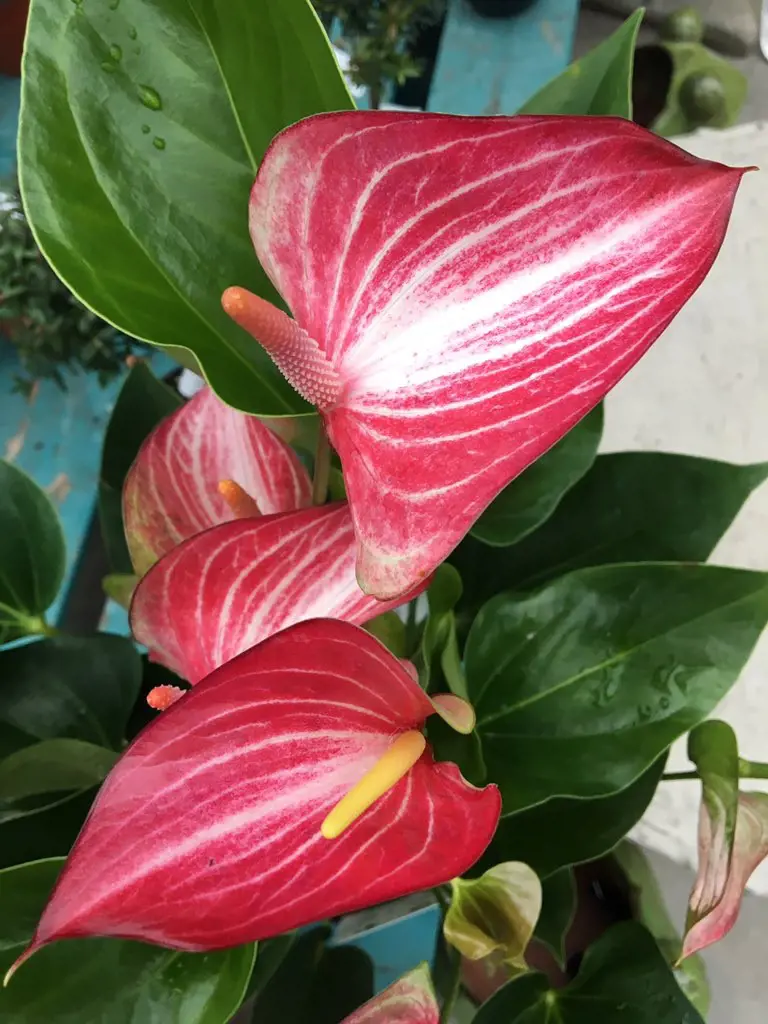
Optimal timing is crucial when planting Anthuriums to ensure their successful establishment. Spring and early summer are the ideal seasons for planting, as these tropical plants thrive in warm temperatures. You can choose a day with mild weather to reduce transplant shock.
Now, if you're in a colder climate, consider starting indoors and transplanting when the weather warms up. The goal is to avoid frost and extreme temperature fluctuations.
Planting during the right season provides your Anthuriums with the best conditions for robust growth, resulting in vibrant blooms and lush foliage in your garden or indoor space.
Propagation

Propagating Anthuriums is a rewarding venture for every plant enthusiast.
- Start by choosing a healthy parent plant with mature leaves. The most common method is division – carefully separating offsets with roots from the main plant.
- Each division should have a few leaves and a robust root system. Alternatively, propagation through cuttings involves snipping a healthy stem with at least two nodes and allowing it to root in a moist substrate.
- You should provide a warm and humid environment during the propagation process.
- Once roots develop, transplant the new Anthurium into a well-draining mix.
- With patience and care, you'll multiply your Anthurium collection and nurture thriving, new plants.
Is It Easy To Care For Anthuriums?

Caring for Anthurium plants is surprisingly straightforward, making them an excellent choice for both novice and seasoned plant enthusiasts.
These lush, heart-shaped blooms thrive in indirect light, preferring bright but filtered sunlight. Keep the soil consistently moist, allowing the top inch to dry out between waterings.
Anthuriums adore humidity, so misting or placing a humidifier nearby enhances their well-being. Regular fertilization during the growing season with a balanced liquid fertilizer ensures optimal growth.
Protect them from drafts and harsh temperatures, aiming for a warm, tropical environment. With minimal effort and attention to these basics, Anthuriums reward their caregivers with stunning, long-lasting flowers and glossy foliage.
Types of Anthurium
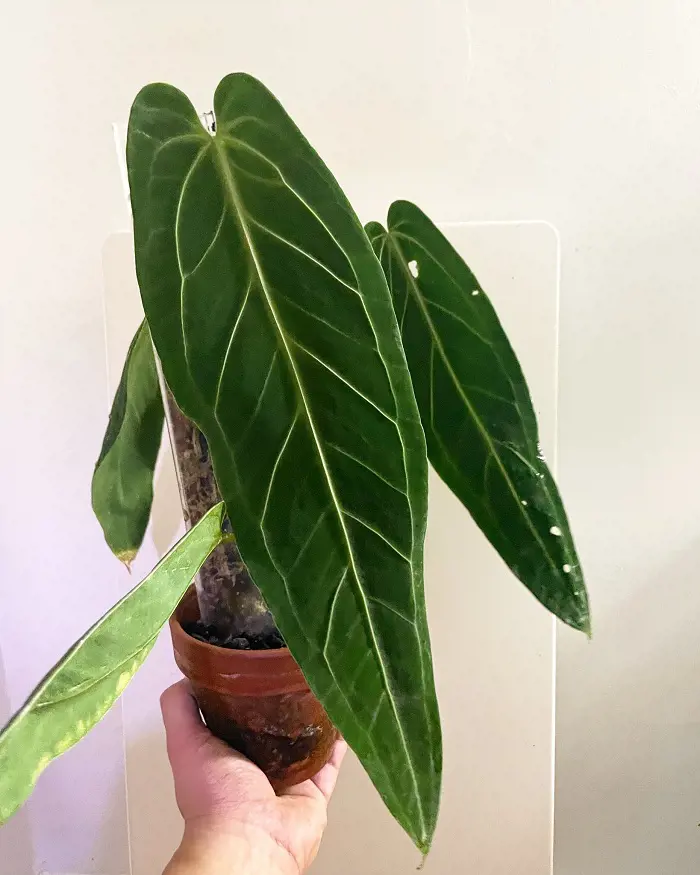
Anthuriums, with over a thousand species and hybrids, offer a rich array of options, each showcasing distinctive features. From the classic elegance of Laceleaf to the unique textures of Queen Anthurium, these plants add beauty and charm to any indoor garden.
- Anthurium andraeanum (Flamingo Flower): Known for heart-shaped blooms in vibrant hues.
- Anthurium clarinervium: Features striking, velvety, dark-green leaves with prominent white veins.
- Anthurium scherzerianum (Laceleaf): Characterized by slender, wavy spathes and a compact growth habit.
- Anthurium crystallinum: Showcases large, glossy, heart-shaped leaves, resembling stained glass.
- Anthurium warocqueanum (Queen Anthurium): Impresses with large, deeply lobed, corrugated leaves.
- Anthurium regale: Boasts immense, deeply lobed foliage, making it a collector's favorite.
Does Anthurium Grow in Water?
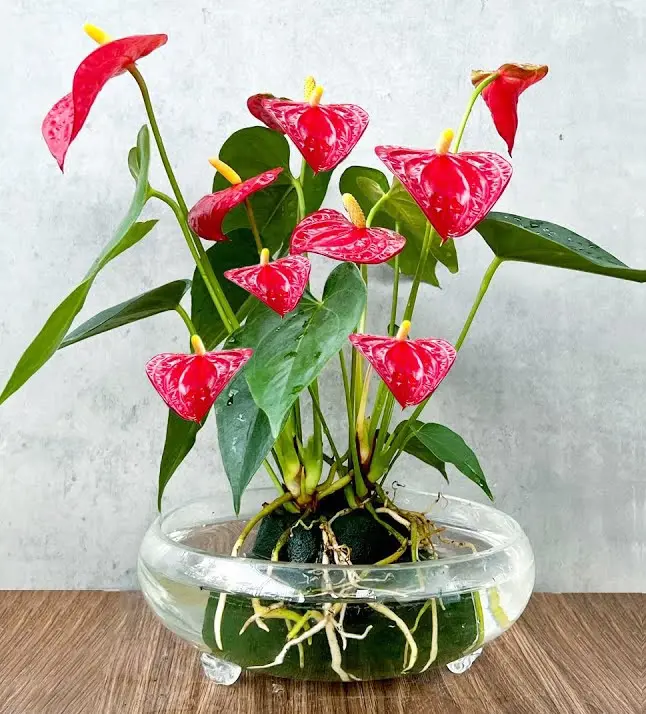
Anthuriums, while primarily terrestrial plants, can be grown in water to some extent. However, it's not their optimal environment. Propagation through water is possible by placing cuttings with nodes in a water-filled container until roots develop.
Once roots are established, transplant the Anthurium into a well-draining soil mix for sustained growth. While water propagation is feasible for short durations, providing a suitable soil medium ensures the long-term health and flourishing of Anthurium plants.
Adequate care, including proper watering and light conditions, is essential for these tropical beauties to thrive in a traditional potting mix.
Additional Care Tips

Delve deeper into Anthurium care with these extra tips to foster optimal health and beauty:
- Seasonal Adjustments: Tailor care to seasons, reducing watering and fertilizing during winter's dormancy and increasing in spring and summer.
- Proper Potting: Repot every 2-3 years or when the plant outgrows its container, refreshing the soil mix for continued vitality.
- Leaf Shine: Gently wipe leaves with a damp cloth to remove dust, enhancing their ability to absorb light.
- Root Check: Periodically inspect roots for rot or overcrowding; trim damaged roots during repotting.
- Supportive Staking: For larger varieties, use stakes to support heavy flowers and prevent breakage.






